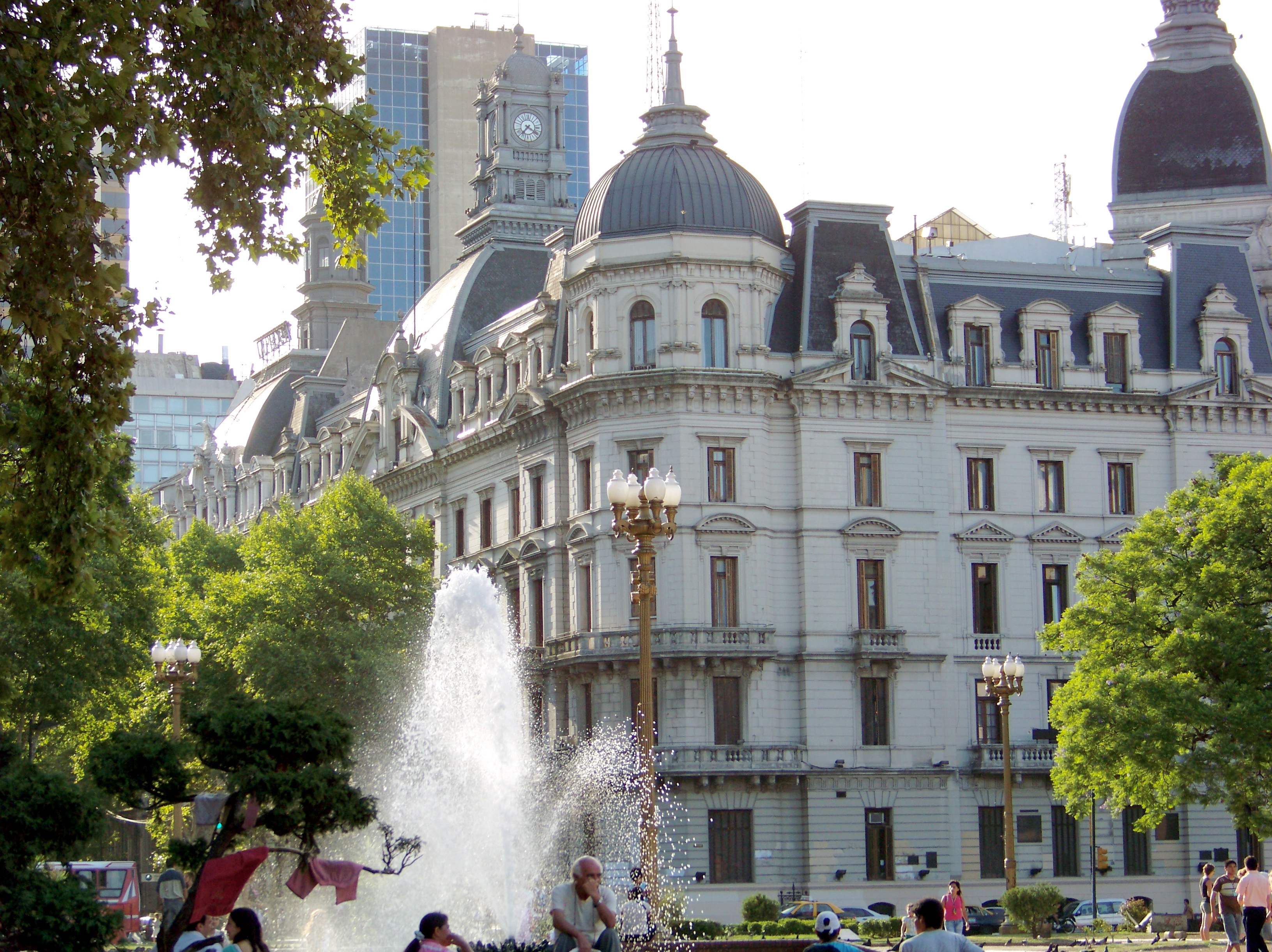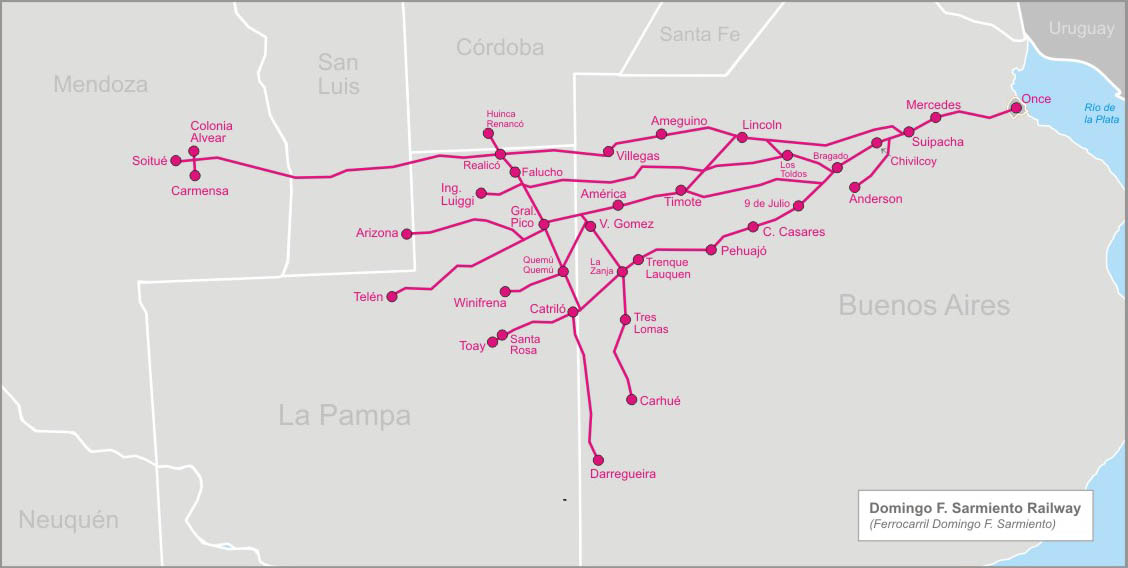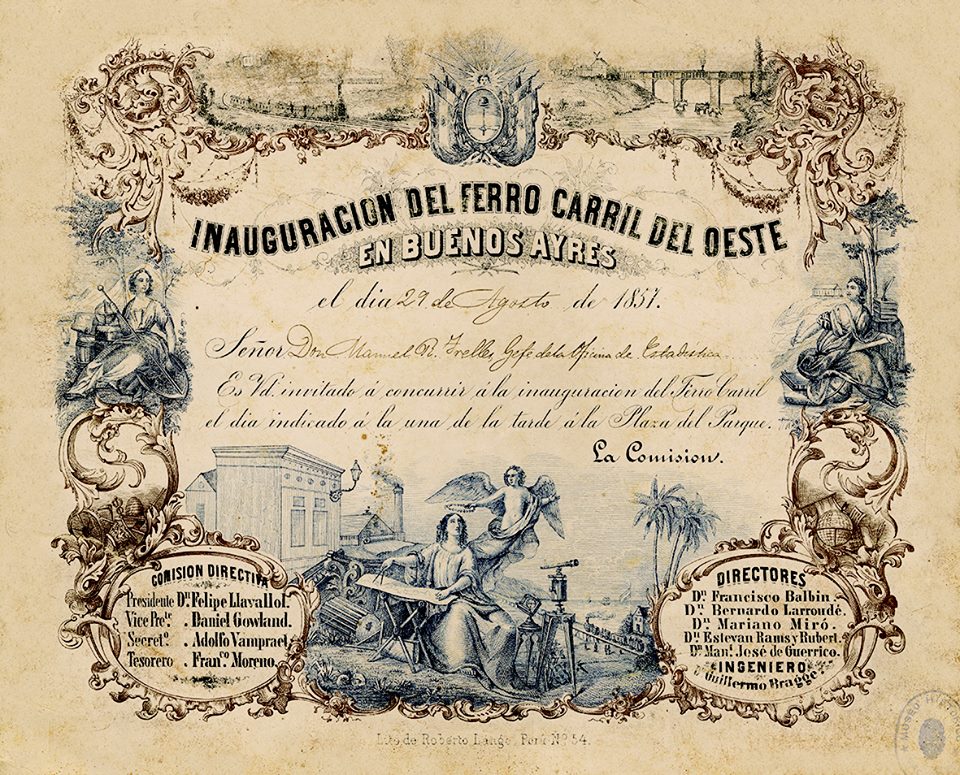|
Line A (Buenos Aires Underground)
Line A is the oldest line of the Buenos Aires Underground. Opened to the public on 1 December 1913, it was the first underground line in South America, the Southern Hemisphere and the Spanish-speaking world. It made Buenos Aires the 13th city in the world to have an underground transport service. The line stretches from Plaza de Mayo and San Pedrito and runs under the full length of the Avenida de Mayo and part of the Avenida Rivadavia, and is used by 258,000 people per day. On the first day of public service (18 December 1913), it carried 220,000 passengers.Subterráneos de Buenos Aires (Official Page) History of Line A – Retrieved 2010-11-04 Line A used the |
Línea A (SBASE) Bullet
Line A is name of several transport lines: *A (New York City Subway service), U.S. *Line A (Buenos Aires Underground), Argentina *A Line (Los Angeles Metro) The A Line (formerly and colloquially known as the Blue Line) is a light rail line in Los Angeles County, California. It is one of the six lines of the Los Angeles Metro Rail system, operated by the Los Angeles County Metropolitan Transportati ..., U.S. * A Line (RTD), Denver, U.S. * Line A (Prague Metro), Czech Republic * Line A (Rome Metro), Italy * Mexico City Metro Line A, Mexico City * Line A (EuskoTran), Bilbao, Spain (former name) * Santiago Metro Line A, a line that is in planning, Santiago Chile See also * A Train (other) * A-line (other) {{disambiguation ... [...More Info...] [...Related Items...] OR: [Wikipedia] [Google] [Baidu] |
Pantograph (rail)
A pantograph (or "pan" or "panto") is an apparatus mounted on the roof of an electric train, tram or trolley buses to collect power through contact with an overhead line. The term stems from the resemblance of some styles to the mechanical pantographs used for copying handwriting and drawings. The pantograph is a common type of current collector; typically, a single or double wire is used, with the return current running through the rails. Other types of current collectors include the bow collector and the trolley pole. Invention The pantograph, with a low-friction, replaceable graphite contact strip or "shoe" to minimise lateral stress on the contact wire, first appeared in the late 19th century. Early versions include the bow collector, invented in 1889 by Walter Reichel, chief engineer at Siemens & Halske in Germany, and a flat slide-pantograph first used in 1895 by the Baltimore and Ohio Railroad. The familiar diamond-shaped roller pantograph was devised and p ... [...More Info...] [...Related Items...] OR: [Wikipedia] [Google] [Baidu] |
Philipp Holzmann
Philipp Holzmann AG was a German construction company based in Frankfurt am Main. History Early years The company was founded in 1849 by Johann Philipp Holzmann (1805-1870) at Sprendlingen in present-day Dreieich near Frankfurt am Main as Philipp Holzmann & Cie. Initially, the former sawmill company was concentrating on the supply of ties for railway construction, but then began to expand into building construction and civil engineering. In 1856, the headquarters moved to Frankfurt where in the late 19th century the company experienced rapid growth. The first large building contract to be finished was the opera house completed in 1880,Groß, p. 50 followed by the central station in Frankfurt am Main completed in 1888 and the Amsterdam Centraal railway station in 1889. Holzmann also built the original Reichstag building completed in 1894, the Hamburg city hall completed in 1897 and several railway projects in East Africa and Asia, especially the Bagdadbahn built from 1903 which ... [...More Info...] [...Related Items...] OR: [Wikipedia] [Google] [Baidu] |
Anglo-Argentine Tramways Company
The Anglo-Argentine Tramways Company (Spanish: ''Compañía de Tranvías Anglo Argentina''), known simply as ''La Anglo'' in Argentina, was a large transportation company which operated the majority of the trams in Buenos Aires, trams in the Buenos Aires network, which was also one of the largest in the world at the time having lines totalling in length. The company also created Buenos Aires' first underground tram line, which would go on to become Line A (Buenos Aires Underground), Line A of the Buenos Aires Underground. The company also owned other List of town tramway systems in Argentina, tramways around the country. History The company was founded in 1876 by British people, British and Anglo-Argentine investors in order to acquire the existing Trams in Buenos Aires, Buenos Aires tramway network, within the context of the country's ''belle epoque'', where it was receiving significant investments from foreign companies. By the turn of the century, the company owned a signif ... [...More Info...] [...Related Items...] OR: [Wikipedia] [Google] [Baidu] |
Buenos Aires City Hall
Buenos Aires City Hall (; lit. "Municipal Palace") was, until 2015, the seat of the Office of the Chief of Government of Buenos Aires, the capital city of Argentina. From its construction in 1914 to the reformation of the city's constitution in 1996, the building was the seat of the City Municipality. It faces the Plaza de Mayo, across from the Casa Rosada presidential palace, in the ''barrio'' of Monserrat. Since 2015, the Office of the Chief of Government has been located at a new building in the ''barrio'' of Parque Patricios. The City Hall still houses various government offices of the city government. Building The 1880 Federalization of Buenos Aires was followed by a boom in foreign trade and European immigration, and in 1890, Mayor Francisco P. Bollini commissioned the construction of a new city hall. The building would replace what had been the city government's offices since 1860 - the second floor of police headquarters; the city had grown dramatically since then, ... [...More Info...] [...Related Items...] OR: [Wikipedia] [Google] [Baidu] |
Puerto Madero
Puerto Madero, also known within the urban planning community as the Puerto Madero Waterfront, is a Barrios and Communes of Buenos Aires, ''barrio'' of Buenos Aires in the Buenos Aires Central Business District, Central Business District. Occupying a significant portion of the riverbank, it is the site of several Tower block, high-rise buildings and luxurious hotels, featuring the latest architectural trends. Puerto Madero has by far the highest property values of any barrio within Buenos Aires, surpassing the second-highest twofold. History 19th century From its inception, the city of Buenos Aires had a problem accommodating large cargo ships, as per Puerto La Boca, because the shallow river did not allow for direct docking. Instead, ships were moored away from the shore, with passengers and merchandise being unloaded onto barges and ferries for transport to the pier. In 1882, the national government contracted the local businessman Eduardo Madero to take charge of the cons ... [...More Info...] [...Related Items...] OR: [Wikipedia] [Google] [Baidu] |
Once Railway Station
Once railway station (, ; informally known as ) is a large railway terminus in central Buenos Aires, Argentina, in the ''Neighbourhoods of Buenos Aires, barrio'' of Balvanera. The station, inaugurated on 20 December 1882, is located in the barrio of Balvanera, immediately north of Plaza Miserere, a large public square. The current terminal, designed by the Dutch architect John Doyer in Renaissance Revival style, was built in two stages, from 1895 to 1898, and then from 1906 to 1907. The station is named after the Revolution of 11 September 1852, 11 September 1852 rebellion of State of Buenos Aires, Buenos Aires against the Federales (Argentina), federal government of Justo José de Urquiza. Contrary to popular belief, the station is not named after the death of the president Domingo Faustino Sarmiento on 11 September 1888. History Background and first buildings In 1853, a group of entrepreneurs from the upper class of Buenos Aires formed the ''Society of the Iron Road from Bue ... [...More Info...] [...Related Items...] OR: [Wikipedia] [Google] [Baidu] |
Sarmiento Railway
The Domingo Faustino Sarmiento Railway (FCDFS) (Spanish: Ferrocarril Domingo Faustino Sarmiento), named after the former Argentine president, statesman, educator, and author Domingo Faustino Sarmiento, is one of the six state-owned Argentina, Argentine railway divisions formed after President Juan Perón's Railway nationalization in Argentina, nationalisation of the Argentine railway network in 1948. The six companies were managed by Ferrocarriles Argentinos which was later broken up during the process of railway Railway Privatisation in Argentina, privatisation beginning in 1991 during Carlos Menem's presidency. The principal lines departed from Once railway station in Buenos Aires to the west through the provinces of Buenos Aires Province, Buenos Aires, La Pampa Province, La Pampa, Córdoba Province (Argentina), Córdoba, San Luis Province, San Luis and Mendoza Province, Mendoza. The railway was created after the nationalization of Indian gauge, broad gauge lines on the Brit ... [...More Info...] [...Related Items...] OR: [Wikipedia] [Google] [Baidu] |
Buenos Aires Western Railway
The Buenos Aires Western Railway (BAWR; Spanish: Ferrocarril Oeste de Buenos Aires), inaugurated in the city of Buenos Aires on 29 August 1857, was the first railway built in Argentina and the start of the extensive rail network that was developed over the following years. The locomotive ''La Porteña'', built by the British firm EB Wilson & Company in Leeds, hauled the first train to travel on this line. The BAWR was one of the ''Big Four'' broad gauge, British companies that built and operated railway networks in Argentina. The route initially measured , stretching from Del Parque station (now the site of the Teatro Colón) to Floresta station, which at that time was located in San José de Flores village, but is now within Buenos Aires city limits. The rails were laid along what are now Lavalle, Enrique S. Discépolo, Avenida Corrientes, and Avenida Pueyrredón, and then followed the route of the current Domingo Sarmiento Railway line towards Floresta. Although the co ... [...More Info...] [...Related Items...] OR: [Wikipedia] [Google] [Baidu] |
Argentine National Congress
The National Congress of Argentina () is the legislative branch of the government of Argentina. Its composition is bicameral, constituted by a 72-seat Senate and a 257-seat Chamber of Deputies. The Senate, a third of whose members are elected to six-year renewable terms every two years, consists of three representatives from each province and the federal capital. The Chamber of Deputies, whose members are elected to four-year terms, is apportioned according to population, and renews their members by a half each two years. The Congressional Palace is located in Buenos Aires, at the western end of Avenida de Mayo (at the other end of which is located the Casa Rosada). The '' Kilometre Zero'' for all Argentine National Highways is marked on a milestone at the Congressional Plaza, next to the building. Attributes The Argentine National Congress is bicameral, composed of the Senate and the Chamber of Deputies. The ordinary sessions span is from March 1 to November 30; the Preside ... [...More Info...] [...Related Items...] OR: [Wikipedia] [Google] [Baidu] |
Public Transport
Public transport (also known as public transit, mass transit, or simply transit) are forms of transport available to the general public. It typically uses a fixed schedule, route and charges a fixed fare. There is no rigid definition of which kinds of transport are included, and air travel is often not thought of when discussing public transport—dictionaries use wording like "buses, trains, etc." Examples of public transport include Public transport bus service, city buses, trolleybuses, trams (or light rail) and Passenger rail transport, passenger trains, rapid transit (metro/subway/underground, etc.) and ferry, ferries. Public transport between cities is dominated by airlines, intercity bus service, coaches, and intercity rail. High-speed rail networks are being developed in many parts of the world. Most public transport systems run along fixed routes with set embarkation/disembarkation points to a prearranged timetable, with the most frequent services running to a headwa ... [...More Info...] [...Related Items...] OR: [Wikipedia] [Google] [Baidu] |
La Brugeoise Car At Plaza De Mayo
LA most frequently refers to Los Angeles, the second most populous city in the United States of America. La, LA, or L.A. may also refer to: Arts and entertainment Music *La (musical note), or A, the sixth note *"L.A.", a song by Elliott Smith on ''Figure 8'' (album) * ''L.A.'' (EP), by Teddy Thompson *''L.A. (Light Album)'', a Beach Boys album * "L.A." (Neil Young song), 1973 *The La's, an English rock band *L.A. Reid, a prominent music producer * Yung L.A., a rapper *Lady A, an American country music trio * "L.A." (Amy Macdonald song), 2007 *"La", a song by Australian-Israeli singer-songwriter Old Man River *''La'', a Les Gordon album Other media * l(a, a poem by E. E. Cummings * La (Tarzan), fictional queen of the lost city of Opar (Tarzan) *'' Lá'', later known as Lá Nua, an Irish language newspaper * La7, an Italian television channel *LucasArts, an American video game developer and publisher * Liber Annuus, academic journal Business, organizations, and government a ... [...More Info...] [...Related Items...] OR: [Wikipedia] [Google] [Baidu] |








